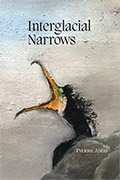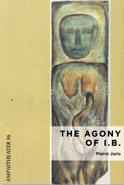Melting Ice
Until recently, conflicting results have meant estimates of ice loss at the poles vary widely. Now an international team has used satellite data and climate modelling to show that, in the decade ending in 2006, annual ice loss from West Antarctica increased by 59 per cent while losses from the Antarctic Peninsula leapt by 140 per cent (Nature Geoscience, DOI: 10.1038/ngeo102). These results tie in nicely with recent results obtained by other methods, bringing consensus over ice loss a bit closer.
Also this week, a separate team used glacier and meteorological data in Greenland to show that local warming since 1990 has resulted in the most severe melting in 50 years (Journal of Climate, DOI: 10.1175/2007/JCLI1964.1).
Climate Change – Want to know more about global warming: the science, impacts and political debate? Visit our continually updated special report.
From issue 2639 of New Scientist magazine, 19 January 2008, page 7
Nature Geoscience
Published online: 13 January 2008 | doi:10.1038/ngeo102
Recent Antarctic ice mass loss from radar interferometry and regional climate modeling
Eric Rignot 1, 2,3, Jonathan L. Bamber4, Michiel R. van den Broeke5, Curt Davis6, Yonghong Li6, Willem Jan van de Berg5 & Erik van Meijgaard7
Large uncertainties remain in the current and future contribution to sea level rise from Antarctica. Climate warming may increase snowfall in the continent’s interior1, 2, 3, but enhance glacier discharge at the coast where warmer air and ocean temperatures erode the buttressing ice shelves 4, 5, 6, 7, 8, 9, 10, 11. Here, we use satellite interferometric synthetic-aperture radar observations from 1992 to 2006 covering 85% of Antarctica’s coastline to estimate the total mass flux into the ocean. We compare the mass fluxes from large drainage basin units with interior snow accumulation calculated from a regional atmospheric climate model for 1980 to 2004. In East Antarctica, small glacier losses in Wilkes Land and glacier gains at the mouths of the Filchner and Ross ice shelves combine to a near-zero loss of 461 Gt yr-1. In West Antarctica, widespread losses along the Bellingshausen and Amundsen seas increased the ice sheet loss by 59% in 10 years to reach 13260 Gt yr-1 in 2006. In the Peninsula, losses increased by 140% to reach 6046 Gt yr-1 in 2006. Losses are concentrated along narrow channels occupied by outlet glaciers and are caused by ongoing and past glacier acceleration. Changes in glacier flow therefore have a significant, if not dominant impact on ice sheet mass balance.
1 University of California Irvine, Earth System Science, Irvine, California 92697, USA
2Jet Propulsion Laboratory, California Institute of Technology, Pasadena, California 91109, USA
3 Centro de Estudios Cientificos, Arturo Prat 514, Valdivia, Chile
4 University of Bristol, Bristol BS8 1SS, UK
5 Institute for Marine and Atmospheric Research (IMAU), Utrecht University, 3584 CC Utrecht, The Netherlands
6 University of Missouri-Columbia, Columbia, Missouri 65211, USA
7 Royal Netherlands Meteorological Institute (KNMI), 3732 GK De Bilt, The Netherlands
Correspondence to: Eric Rignot1, 2, 3 e-mail: erignot@uci.edu


 “Todesguge/Deathfugue”
“Todesguge/Deathfugue” “Interglacial Narrows (Poems 1915-2021)”
“Interglacial Narrows (Poems 1915-2021)” “Always the Many, Never the One: Conversations In-between, with Florent Toniello”
“Always the Many, Never the One: Conversations In-between, with Florent Toniello” “Conversations in the Pyrenees”
“Conversations in the Pyrenees” “A Voice Full of Cities: The Collected Essays of Robert Kelly.” Edited by Pierre Joris & Peter Cockelbergh
“A Voice Full of Cities: The Collected Essays of Robert Kelly.” Edited by Pierre Joris & Peter Cockelbergh “An American Suite” (Poems) —Inpatient Press
“An American Suite” (Poems) —Inpatient Press “Arabia (not so) Deserta” : Essays on Maghrebi & Mashreqi Writing & Culture
“Arabia (not so) Deserta” : Essays on Maghrebi & Mashreqi Writing & Culture “Barzakh” (Poems 2000-2012)
“Barzakh” (Poems 2000-2012) “Fox-trails, -tales & -trots”
“Fox-trails, -tales & -trots” “The Agony of I.B.” — A play. Editions PHI & TNL 2016
“The Agony of I.B.” — A play. Editions PHI & TNL 2016 “The Book of U / Le livre des cormorans”
“The Book of U / Le livre des cormorans” “Memory Rose Into Threshold Speech: The Collected Earlier Poetry of Paul Celan”
“Memory Rose Into Threshold Speech: The Collected Earlier Poetry of Paul Celan” “Paul Celan, Microliths They Are, Little Stones”
“Paul Celan, Microliths They Are, Little Stones” “Paul Celan: Breathturn into Timestead-The Collected Later Poetry.” Translated & with commentary by Pierre Joris. Farrar, Straus & Giroux
“Paul Celan: Breathturn into Timestead-The Collected Later Poetry.” Translated & with commentary by Pierre Joris. Farrar, Straus & Giroux